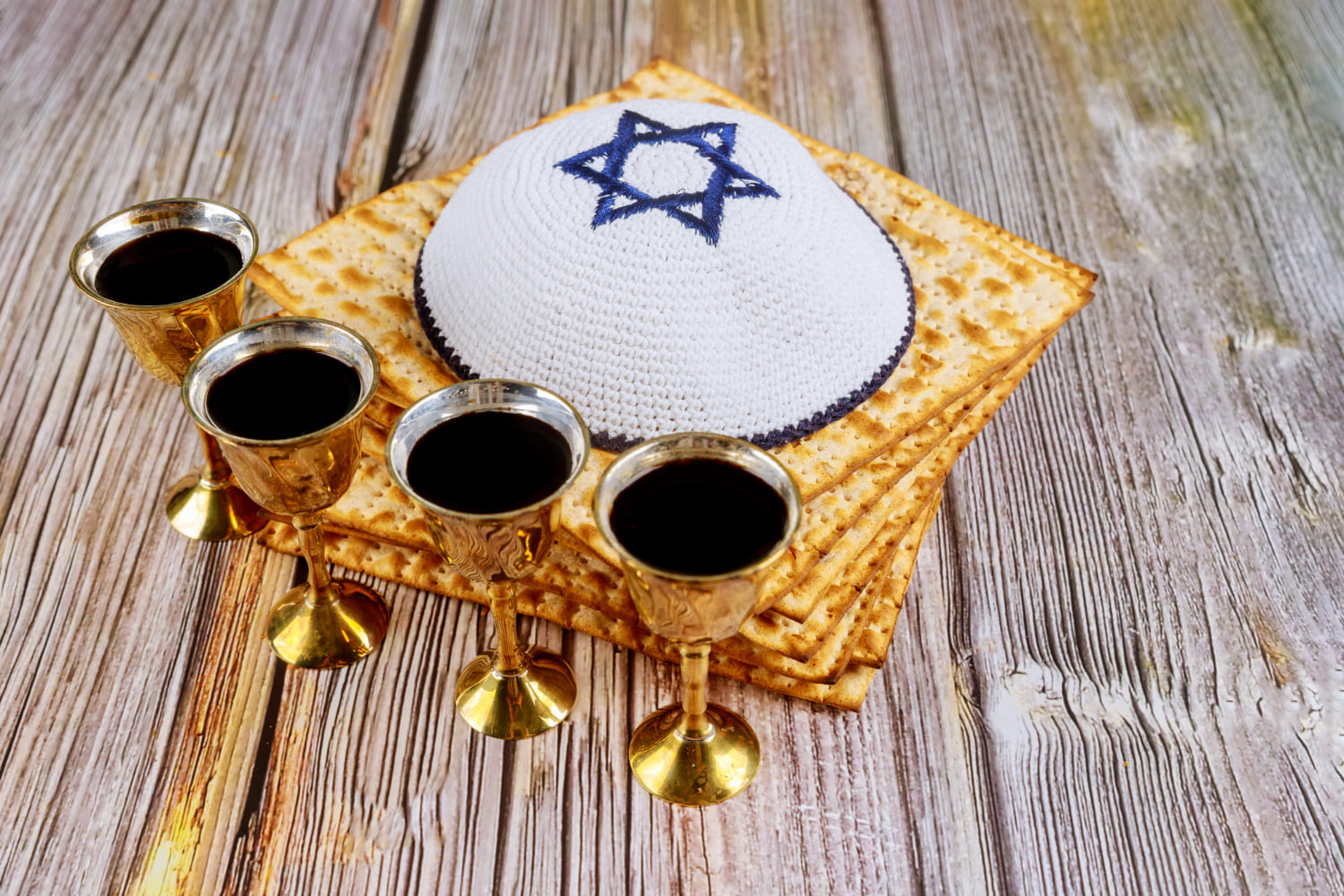Are you curious about the rules and regulations of Judaism? Jewish religious law, known as Halakhah, is an extensive system of rules and guidelines that dictate how Jews should live their lives.
These laws cover everything from daily rituals to ethical behavior, and they are based on the teachings of the Torah, Talmud, and other Jewish texts.
There are 613 commandments, or mitzvot, in Judaism, and they are divided into positive and negative commandments.
Positive commandments are things you should do, while negative commandments are things you should not do. These commandments cover a wide range of topics, including worship, personal conduct, and social justice.
If you’re interested in learning more about Jewish rules and regulations, this guide is for you. We’ll provide a comprehensive list of the 613 commandments, as well as explanations and examples of how these rules are applied in everyday life.
Whether you’re Jewish or simply curious about Jewish tradition, this guide will give you a deeper understanding of the principles and practices that shape Jewish life.
Overview of Jewish Rules
Jewish rules are based on the Torah, Talmud, and other Jewish texts. These rules are designed to guide Jewish individuals in their daily lives and ensure that they follow the commandments of God.
Jewish rules cover a wide range of topics, including dietary laws, prayer, Sabbath observance, and more.
One of the most important aspects of Jewish rules is the concept of mitzvot, or commandments. There are 613 mitzvot in total, which are divided into positive commandments (mitzvot aseh) and negative commandments (mitzvot lo ta’aseh).
Positive commandments are actions that Jews are required to perform, while negative commandments are actions that Jews are forbidden from performing.
Jewish rules also cover the concept of halakhah, or Jewish law. Halakhah is a comprehensive system of Jewish law that includes not only the biblical commandments but also the rabbinic interpretations and traditions.
Halakhah covers a wide range of topics, including family law, business law, and criminal law. In addition to mitzvot and halakhah, Jewish rules also cover the concept of kashrut, or Jewish dietary laws. These laws dictate which foods are considered kosher and which foods are not.
For example, Jews are not allowed to eat pork or shellfish, and they must only eat meat that has been slaughtered according to specific guidelines.
Overall, Jewish rules are designed to guide Jewish individuals in their daily lives and help them follow the commandments of God. By following these rules, Jews can live a life that is both spiritually fulfilling and morally upright.
Kashrut (Dietary Laws)
Kashrut is the set of Jewish dietary laws that dictate what can and cannot be eaten. The laws of Kashrut are extensive, but they all derive from a few simple rules. The Torah commands us to keep the laws of Kashrut and gives no explanation why.
However, we can approach Kashrut in one of three ways:
- G‑d made man. Just as a mechanic knows a car, G‑d knows man. He sees that for a Jew, eating non-kosher food is not good for his physical or spiritual health.
- The laws of Kashrut are symbolic. They are a reminder of the special relationship between G‑d and the Jewish people.
- The laws of Kashrut are practical. They help us maintain a healthy and clean lifestyle.
Although the laws of Kashrut are numerous and complex, they rest on a few basic principles:
| Principle | Explanation |
|---|---|
| Certain animals may not be eaten at all. | This restriction includes the flesh, organs, eggs, and milk of the forbidden animals. Only certain types of mammals, birds, and fish meeting specific criteria are kosher. |
| Meat and dairy may not be combined. | The consumption of meat and dairy together is forbidden. This includes cooking, eating, and deriving benefit from such a mixture. |
| Animals must be slaughtered in a specific way. | The slaughtering of an animal must be performed by a trained and certified Jewish ritual slaughterer, known as a shochet. The animal must be healthy and conscious at the time of slaughter. |
These principles are the foundation of the laws of Kashrut. They help us maintain a healthy and clean lifestyle while also reminding us of our special relationship with G‑d. By following the laws of Kashrut, we can strengthen our connection to our heritage and live a more meaningful life.
Shabbat (Sabbath Observance)
Shabbat is the Jewish day of rest, which lasts from Friday evening to Saturday evening. It is a time for spiritual rejuvenation and family togetherness, and it involves a number of rules and restrictions that guide how Jews should spend their time during this period.
Some basic activities that are prohibited on Shabbat include writing, erasing, and tearing; business transactions; driving or riding in cars or other vehicles; shopping; using the telephone; turning on or off anything which uses electricity, including lights, radios, television, computer, air-conditioners and alarm clocks.
However, there are many other rules and customs that govern Shabbat observance.
One of the most important aspects of Shabbat is the lighting of candles, which marks the beginning of the day of rest. It is traditional to light at least two candles, representing the two passages in the Torah in which Jews are commanded to keep Shabbat.
The first occurs in Exodus 20:8, which states: “Remember the Sabbath day to keep it holy,” and the second in Deuteronomy 5:12: “Observe the Sabbath day to keep it holy.”
Another key aspect of Shabbat is the recitation of Kiddush, a blessing over wine or grape juice that marks the beginning of the Friday night meal. This is followed by a festive meal with family and friends, which is often accompanied by singing and prayer.
On Saturday morning, many Jews attend synagogue services and participate in Torah study and other religious activities.
Overall, Shabbat is a time for Jews to disconnect from the stresses of daily life and focus on spiritual and communal pursuits. While it may involve some restrictions and limitations, it is ultimately a time of joy and celebration.
Holidays and Festivals
Judaism has many holidays and festivals throughout the year. These holidays are an important part of Jewish life and are celebrated by Jews all around the world.
Each holiday has its own unique customs and traditions, but they all share a common theme of celebrating Jewish history and culture.
Some of the major Jewish holidays include:
- Rosh Hashanah: The Jewish New Year, which is celebrated in the fall. It is a time for reflection, repentance, and renewal.
- Yom Kippur: The Day of Atonement, which is considered the holiest day of the Jewish year. It is a day of fasting, prayer, and repentance.
- Hanukkah: The Festival of Lights, which is celebrated in December. It commemorates the miracle of the oil in the Temple and is celebrated by lighting candles on a menorah.
- Purim: A joyous holiday in the spring that celebrates the salvation of the Jewish people from a plot to destroy them in ancient Persia.
- Passover: A spring holiday that celebrates the Jewish people’s liberation from slavery in ancient Egypt. It is celebrated with a Seder meal and the retelling of the Exodus story.
- Shavuot: A summer holiday that commemorates the giving of the Torah at Mount Sinai. It is celebrated with the reading of the Ten Commandments and the eating of dairy foods.
- Sukkot: A fall holiday that celebrates the Jewish people’s wandering in the desert after leaving Egypt. It is celebrated by building and dwelling in a sukkah, a temporary outdoor shelter.
On Jewish holidays, there are certain rules and customs that must be followed. For example, on Shabbat and certain holidays, no work is allowed, and special prayers and blessings are recited. On Passover, certain foods are forbidden, and the Seder meal must be conducted in a specific way.
It is important to familiarize oneself with the customs and rules of each holiday in order to properly observe and celebrate.
Prayer and Worship
Jewish prayer and worship are integral parts of Jewish religious life. According to Jewish law, it is the duty of every Jew to pray three times a day: in the morning, in the afternoon, and at nightfall. These prayers are known as shacharit, minchah, and arvith or maariv, respectively.
The Jewish prayer book, called a siddur, contains special services for each of these three daily prayers. The prayers are recited in Hebrew, and the siddur contains translations and transliterations for those who do not speak Hebrew fluently.
The siddur also includes prayers for special occasions, such as holidays and life cycle events.
Jewish worship also includes the use of ritual objects, such as tefillin, mezuzot, and tallitot. Tefillin are small black leather boxes containing scrolls with verses from the Torah, which are worn by observant Jews during morning prayers.
Mezuzot are small boxes containing parchment scrolls with verses from the Torah, which are affixed to the doorposts of Jewish homes. Tallitot are prayer shawls worn during morning prayers and on certain holidays.
In addition to daily prayer, Jewish worship also includes the observance of Shabbat, the weekly day of rest. Shabbat is ushered in on Friday evening with the lighting of candles and the recitation of special prayers.
The day is spent in rest and prayer, and is concluded on Saturday evening with the recitation of havdalah, a ceremony marking the end of Shabbat.
Overall, Jewish prayer and worship play a central role in Jewish religious life, providing a way for Jews to connect with God and with their community.
Laws of Family and Personal Relationships
Jewish law regulates many aspects of the relationship between husbands and wives, not just in marriage and divorce but even regarding the frequency and timing of sexual contact. Laws of “family purity” prohibit physical intimacy during and after menstruation and require the woman’s immersion in a ritual bath (mikveh) before sexual contact can resume.
These laws are intended to promote holiness and sanctity within the family unit and to emphasize the importance of intimacy within the context of a committed relationship.
Additionally, there are strict rules governing the process of marriage itself. For example, there must be no intercourse with a woman without previous marriage with a deed of marriage and formal declaration of marriage (Deut. 23:18) (CCN133). To take a wife by kiddushin, the sacrament of marriage (Deut. 24:1) (CCA44), is also a requirement.
Divorce is also subject to Jewish law, which requires a formal process and specific conditions to be met before a divorce can be granted. The husband must give his wife a written document called a get, which releases her from the marriage and allows her to remarry.
This process is intended to ensure that divorce is not undertaken lightly and that both parties are fully aware of the implications of ending their marriage.
Overall, Jewish law places a strong emphasis on the importance of family and personal relationships, and provides a framework for building and maintaining strong, healthy relationships within the context of a committed, loving partnership.
While the rules governing these relationships may seem strict or restrictive to some, they are intended to promote love, respect, and sanctity within the family unit, and to ensure that these relationships are built on a foundation of mutual trust, respect, and commitment.
Charitable Giving and Social Responsibility
Charitable giving is an essential part of Jewish culture and is considered a mitzvah, a good deed or commandment.
There are several levels of charitable giving, with the highest being to help sustain a person before they become impoverished by offering a substantial gift in a dignified manner or by extending a suitable loan.
In Jewish thought, giving to people in need is not something extra; it’s just the correct, honest thing to do. The Hebrew word for charity is tzedakah, which actually means “justice” or “righteousness.” The concept of tzedakah differs from the modern Western understanding of “charity.”
The Maimonides’ Eight Levels of Charity is a well-known guide to charitable giving in the Jewish community. It outlines eight levels of giving, with the highest level being to help sustain a person before they become impoverished.
Other levels include giving anonymously, giving before being asked, and giving with a smile and kind words.
| Level of Charity | Description |
|---|---|
| 1 | To support a fellow Jew by endowing him with a gift or loan, or entering into a partnership with him, or finding employment for him, in order to strengthen his hand so that he will not need to be dependent upon others. |
| 2 | To give to the poor without knowing to whom one gives, and without the recipient knowing from who he received. |
| 3 | To give to the poor without knowing who is receiving, but the recipient knows from whom he received. |
| 4 | To give to the poor after being asked. |
| 5 | To give to the poor before being asked. |
| 6 | To give to the poor in a way that the giver knows to whom he gives, but the recipient does not know from whom he received. |
| 7 | To give to the poor in a way that the recipient knows from whom he received, but the giver does not know to whom he gives. |
| 8 | To help a person in need by giving him a gift, a loan, or by entering into a partnership with him, or finding employment for him, but in a way that will neither lead to his dependence nor cause him embarrassment. |
Charitable giving is not only about giving money, but also about social responsibility. Jews are encouraged to be socially responsible and to engage in acts of kindness and good deeds.
This includes volunteering, donating time, and resources to charitable organizations, and helping those in need in their community.
Conclusion
In conclusion, Jewish rules are an integral part of Jewish life and identity. The 613 Mitzvot, as outlined by Rambam, provide a comprehensive guide to Jewish law and practice. Halakhah, the Jewish legal system, governs all aspects of life, from daily rituals to major life events.
While the rules may seem strict and overwhelming to outsiders, they provide structure and meaning to Jewish life. They help Jews connect with their heritage and community, and provide a framework for living a meaningful and purposeful life.
It’s important to note that Jewish rules are not static or monolithic. They have evolved over time, and continue to be interpreted and applied in different ways by different communities and individuals. This diversity is a testament to the richness and complexity of Jewish tradition.
Whether you are Jewish or not, learning about Jewish rules can provide valuable insights into a fascinating and enduring culture. We hope this guide has been informative and helpful, and we encourage you to continue exploring Jewish tradition and history.







